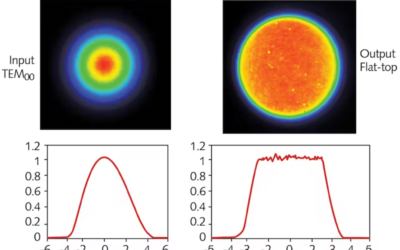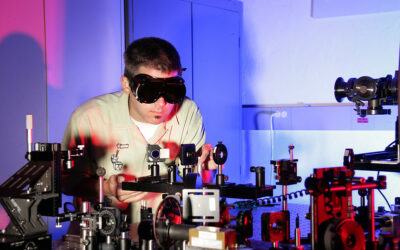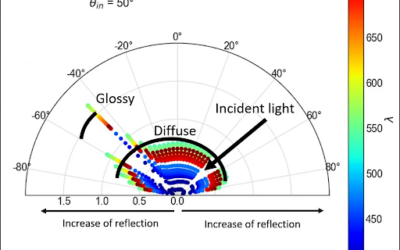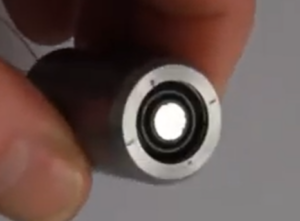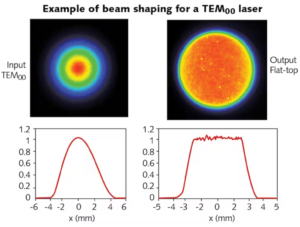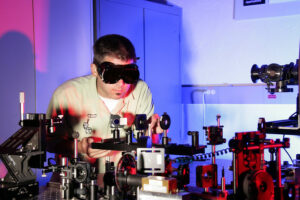Introduction
Optical relays, an integral component of various optical systems, play a crucial role when the user’s proximity to the observed object is limited or when specific image transformations are required. A prevalent example of this is found in relay lenses, often employed in scenarios where physical closeness to the object is impractical, as seen in applications like endoscopes, and borescopes. Additionally, relay lenses find utility in situations where image inversion or rectification is necessary, such as in telescopic sights. This article deals into the field of optical relays, focusing on the design steps taken to create a customized borescope for a client. The exploration encompasses the unique challenges and considerations involved in tailoring an optical relay system to meet specific requirements, shedding light on the sophisticated engineering behind these crucial optical components. Here we describe some steps that were taken to design an optical relay system for a client that needed a custom borescope.
Basics of Relay Lenses
A relay lens is a fundamental optical component designed to relay images from one location to another while preserving or modifying specific optical characteristics. At its core, this system typically consists of at least two lenses strategically positioned to capture and reproduce an image along an optical path. This configuration allows for the observer or imaging device to be situated at a distance from the object being observed.
In a relay lens system, the relationship between the object space (where the original image is formed) and the image space (where the final image is observed or captured) is crucial. The first lens captures the image in the object space, and the subsequent lens or lenses transmit this image to the image space without significant distortion.
One noteworthy application of relay lenses is addressing image inversion or rectification. For example, in rifle scopes, the image formed by the objective lens is often inverted. The relay lens corrects this inversion, ensuring that the observer sees an upright image. This correction is essential for providing accurate and comfortable visual representation.
What is a Borescope?
Borescopes are usually used when there is a need to inspect narrow or difficult access locations. They can be made with rigid or flexible components with an objective lens on one end and a camera or eyepiece on the other. The particular borescope shown in Figure 1 contains an objective lens and a set of relay lenses.
In order to design (or choose the correct) objective lens, there are different parameters that need to be considered such as working distance, field of view, resolution at the camera sensor, image size, etc. The relay lens translates this image from the objective lens to the imaging sensor (not shown).

Figure 1. Borescope concept. An objective lens creates an intermediate image that is picked up by a relay lens and is then translated to an image sensor (not shown)
The objective lens is the key part of the borescope system. The objective lens forms the initial image and provides the needed optical parameters and image quality. We designed this objective lens based on the client’s requirements of resolution, FOV, wavelength range (900-1700 nm in this case), and working distance. During the optimization stage, we carefully pick the best materials to reduce the amount of aberrations.
The borescope required an extension between 400-600 mm: instead of creating a single relay lens for the total length, we divided the length into 4-5 unit elements. That is, 4 or 5 relay lenses with an extension of 100-150mm each and concatenated one after the other to achieve the required borescope length. The relay lens translates an image with a 1:1 magnification, while the aperture of the designed relay lens coincides with the objective lens and the relay lens allows image translation without significant degradation of image quality.
One advantage of this relay lens system is that, if the borescope needs to be extended further (or to be reduced), it will be a matter of removing relay lens sections without affecting the camera or objective lens.
The final optical design step that needs to be implemented is adding a camera (or eyepiece) to observe the image. Our client required a very specific image visualization, but in more general cases, the camera size and resolution should be taken in consideration when designing the objective lens. In our design, we looked at the aberrations and MTF curves at every step, that is, after the objective lens and after adding the relay system. Optimization is done using Zemax, and suggestions were made to the client about how to display the images and adjustments on the objective lens.
When the optical design is complete, the design is passed on to the opto-mechanical engineer who designs the lens housing and prepares the optics manufacturing drawings

Figure 2. Optical Layout of relay lens
When the optical and mechanical designs are complete, it’s time for prototyping. The finished product of camera, relay lens, and objective lens is seen below
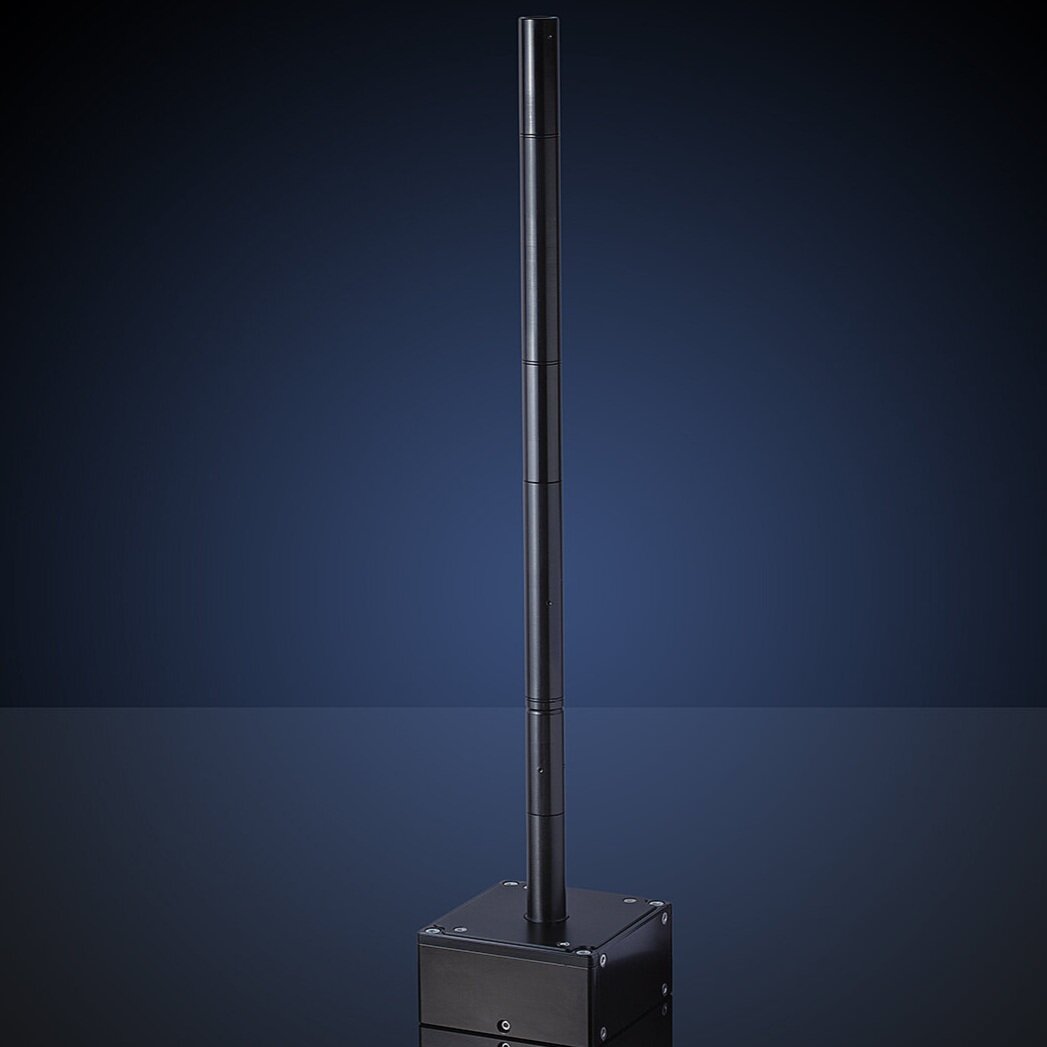
Figure3. The final product a thermal imaging borescope
Distinguishing Relay Lenses from Other Lens Types:
While various types of lenses serve distinct functions in optical systems, relay lenses stand out for their specific role in image transfer and reproduction. Understanding how relay lenses differ from other lens types involves recognizing their unique characteristics and applications.
1. Purpose and Function:
- Relay Lenses: Primarily designed for transferring images from one location to another while maintaining or altering specific optical characteristics. They act as intermediaries, bridging the gap between the object and the observer or imaging device.
- Standard Lenses: These lenses are typically used for general photography and have a fixed focal length. They are not specifically designed for image transfer but rather for capturing scenes with specific perspectives.
2. Image Inversion and Rectification:
- Relay Lenses: Often employed to correct image inversion or rectify images, ensuring that the observer sees an upright representation. This correction is crucial in applications like telescopes.
- Standard Lenses: While they can capture images with high clarity and resolution, standard lenses do not inherently address image inversion or rectification.
3. Configuration and Design:
- Relay Lenses: Consist of at least two lenses arranged to capture and reproduce images along an optical path. The strategic placement of these lenses allows for the transmission of images without significant distortion.
- Specialized Lenses: Different types of specialized lenses, such as fisheye or macro lenses, have specific designs tailored for unique applications, such as capturing wide-angle scenes or extreme close-ups.
4. Application Focus:
- Relay Lenses: Often utilized in situations where the observer cannot be physically close to the object being observed, as seen in endoscopes, or when specific image transformations are needed, as in telescopic sights.
- Macro or Zoom Lenses: Primarily designed for capturing detailed close-ups or adjusting focal lengths to zoom in on distant subjects. Their applications are diverse, catering to specific photographic needs.
Understanding these distinctions allows practitioners to appreciate the specialized role of relay lenses in optical systems, recognizing their significance in scenarios requiring image transfer and specific optical adjustments. While other lens types excel in their designated applications, relay lenses uniquely contribute to the seamless relay of images in various optical devices and instruments.
Recent Innovations
In recent years, the field of optical technology has witnessed remarkable advancements, contributing to enhanced imaging capabilities and novel applications across various industries. One notable innovation lies in the integration of advanced materials, particularly metamaterials, into optical systems. Metamaterials offer unprecedented control over light properties, enabling the design of lenses with unique functionalities, such as flat lenses that can focus light without the need for curved surfaces. This breakthrough has implications for the development of compact and lightweight optical devices.
Another significant innovation is the widespread adoption of 3D printing in optics. The application of additive manufacturing techniques allows for the creation of complex and customized optical components with improved efficiency and reduced production costs. This not only accelerates prototyping processes but also opens up possibilities for designing intricate optical structures that were previously challenging to manufacture using traditional methods.
The convergence of artificial intelligence (AI) and optical systems has ushered in a new era of smart optics. AI algorithms are being integrated into optical devices to optimize performance, correct aberrations in real-time, and enhance image processing. This synergy has proven particularly valuable in applications like autonomous vehicles, medical imaging, and surveillance systems, where real-time decision-making based on optical data is critical.
Advancements in miniaturization have also made a significant impact on optical technology. Smaller and more precise optical components are being developed, leading to the creation of compact imaging devices for medical diagnostics, telecommunications, and consumer electronics. This trend not only reduces the size and weight of optical systems but also fosters the development of portable and wearable optical technologies.
Conclusions
Relay lenses are optical components designed to transfer images from one location to another while preserving or modifying specific optical characteristics. Typically consisting of at least two lenses strategically positioned, relay lenses play a crucial role in scenarios where the observer cannot be physically close to the object being observed or when specific image transformations, such as inversion or rectification, are needed. Their versatility extends to applications like endoscopes, telescopic sights, and other optical systems, facilitating the seamless relay of images with minimal distortion. Relay lenses are distinguished by their ability to bridge the gap between object and observer, making them essential components in various optical devices and instruments.
Relay Lens Design FAQs
What is a relay lens and its primary function?
A relay lens is used in optical systems to transfer an image from one point to another without distortion, commonly used in complex imaging systems.
How does relay lens design impact image quality?
The design of relay lenses greatly affects image clarity, resolution, and field depth, making them crucial for high-quality imaging in optical devices.
Are relay lenses applicable in both digital and analog systems?
Yes, relay lenses are versatile and can be used in both digital and analog imaging systems, depending on the design specifications.
Innovating with Microlens Arrays
Explore the cutting-edge world of microlens and lensarray design. Discover how these miniature lenses are revolutionizing imaging technology.
Mastering Light with Hot and Cold Mirrors
Dive into the science of hot and cold mirrors and their crucial role in controlling UV and IR light in advanced optical systems.

